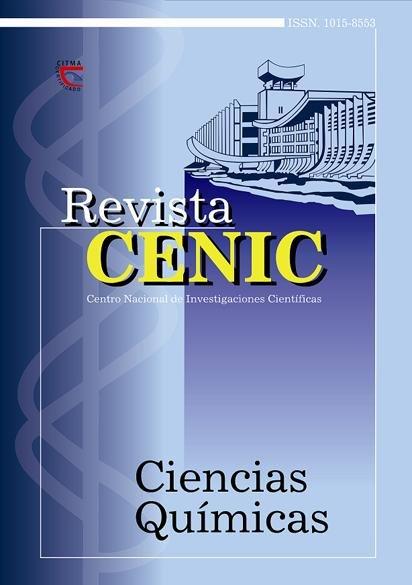Benzalkonium tribromide. Synthesis and use in phenol bromination processes.
Abstract
The classic bromination of aromatic substrates is carried out, conventionally by use of bromine, a very toxic pollutant and hazard. Its manipulation is difficult and during bromination is necessary to use expensive catalysts that generate wastes with great environmental impact. In the last years several catalysts have been introduced but their regioselectivity is not high and require bromine for their preparation. The polyhalide (perbromide). ammonium salts like piridinium tribromide and phenyltrimethylammonium tribromide have been used as brominating agents in mild conditions. These reagents can be used quantitatively in solid form, what facilitates their manipulation to laboratory scale. In the present communication a synthetic way for obtaining bromophenol derivatives using as brominating agent benzalkonium tribromide (Benzal-Br3) is reported. This compound is obtained starting from commercially available benzalkonium chloride and its treatment with NaBrO3-HBr in dichlorometane under simple conditions and with satisfactory yields. Its structural and physic-chemical characteristics (FTIR and NMR-H-C) which corroborate proposed structure are reported. The reaction of phenolic substrates with Benzal-Br3 in dichloromethane-methanol mixture during IAh at ambient temperature allows to obtain the corresponding bromoderivatives (>75%). This procedure allows, without special conditions, to synthesize a series of bromosubstituted phenols in dependence of the brominating agent's molar quantity (1 :1; 2 :1; 3 :1) vs. henolic substrates used.

Downloads
Published
How to Cite
Issue
Section
License
Copyright (c) 2002 Copyright (c) 2002 Revista CENIC Ciencias Químicas

This work is licensed under a Creative Commons Attribution-NonCommercial-ShareAlike 4.0 International License.
Los autores que publican en esta revista están de acuerdo con los siguientes términos:
Los autores conservan los derechos de autor y garantizan a la revista el derecho de ser la primera publicación del trabajo al igual que licenciado bajo una Creative Commons Atribución-NoComercial-CompartirIgual 4.0 que permite a otros compartir el trabajo con un reconocimiento de la autoría del trabajo y la publicación inicial en esta revista.
Los autores pueden establecer por separado acuerdos adicionales para la distribución no exclusiva de la versión de la obra publicada en la revista (por ejemplo, situarlo en un repositorio institucional o publicarlo en un libro), con un reconocimiento de su publicación inicial en esta revista.
Se permite y se anima a los autores a difundir sus trabajos electrónicamente (por ejemplo, en repositorios institucionales o en su propio sitio web) antes y durante el proceso de envío, ya que puede dar lugar a intercambios productivos, así como a una citación más temprana y mayor de los trabajos publicados (Véase The Effect of Open Access) (en inglés).













